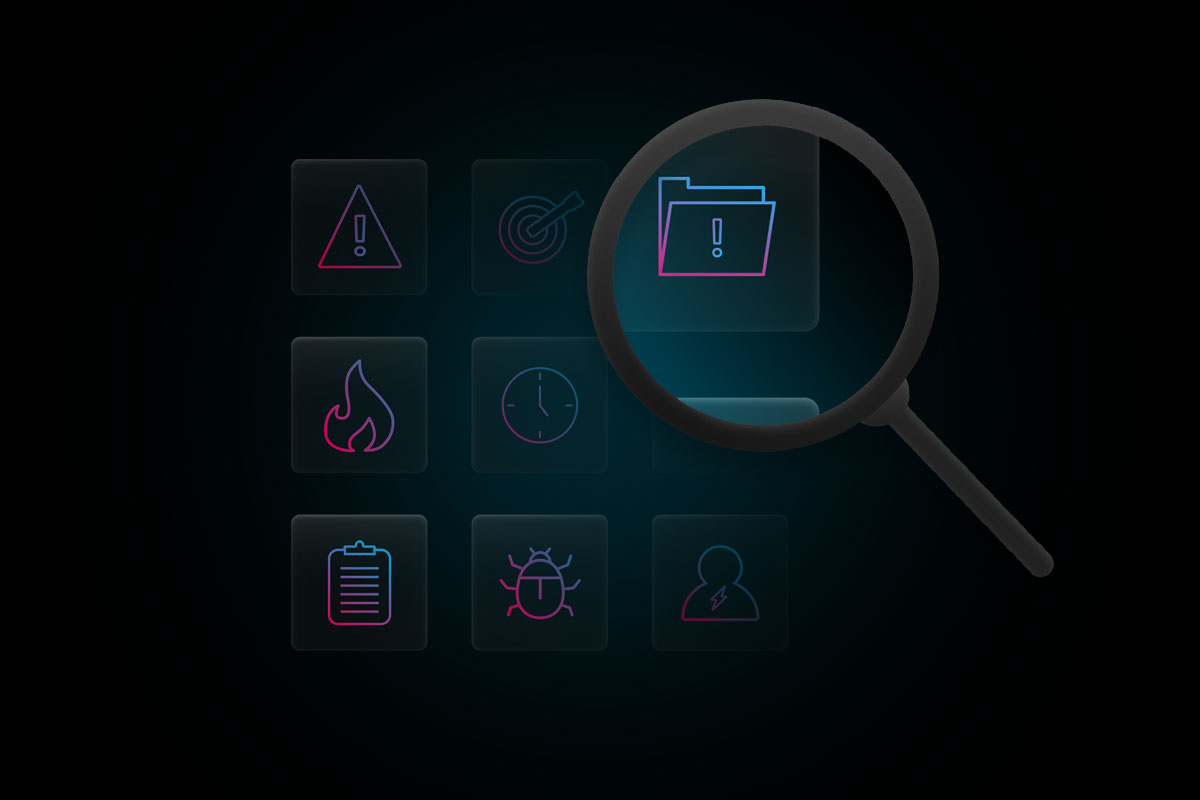
Disclosure: This article is not affiliated with CliffsNotesⓇ.
Being the go-to IT person of the office (without any actual IT training/experience aside from fixing your parents’ home WiFi) is a slippery slope, or, more appropriately, cliff. At first, you’re the office hero when you manage to reconnect the printer signal, and before you know it, you’re on-boarding new employees’ company-issued devices So, if you would like to set yourself up to become your office’s de facto IT person, we’ve compiled a list of essential IT troubleshooting techniques you can implement at your office. However, if you’re more interested in doing the job you were actually hired to do, schedule a demo with Electric (more on that later).
IT Troubleshooting Hacks to Always Have On-Hand
The first few hacks are ones you should always have on-hand, ready to be bestowed on your peers so they too can troubleshoot their way to success and hopefully take some of the burden away from you. Additionally, these hacks require virtually zero IT expertise and should almost never require an IT professional (unless you perceive ‘relaunch’ to mean strapping your device to a firework, again).
Relaunch applications:
If any of your applications like Adobe InDesign or Microsoft Word are acting up or have stopped responding altogether, close out the application and then quit/force quit the application. To prevent the loss of your work, it’s best to be proactive and save your work regularly. However, some applications, like Microsoft Word, save a recovery file at regular intervals.
Restart computer/device:
“Have you tried turning it off and then turning it back on again?” This is the oldest trick in the IT troubleshooting book, mainly because restarting your device will almost always solve your problems (probably).
Clean up device (move things you don’t need on-hand to an external hard drive):
Cleaning up your device is just like cleaning up your home—it’s a chore. Everytime you look at your desktop, you probably look at the clutter of icons and think to yourself, ‘I should really take care of this’. But you don’t…for months. Only when your device starts to struggle to launch Google Chrome do you realize changes need to be made. Tidying up your device will not only work to improve the speed of all of your applications and device in general, but if you’ve been struggling to get a new application to launch, the issue may be that you did not have enough storage to launch it—cleaning up your device should also solve this problem.
Clean up the browser:
If a coworker is complaining about slow internet speed—a lot of factors could be contributing to this, but having a lot of tabs open may actually be the main problem at hand. Having too many open tabs can reduce your internet speeds due to random access memory (RAM) usage. Every tab you have open requires some memory in order to function—and if you’ve gone past the tab-sweet spot, you may be overwhelming your device’s RAM, slowing down your entire system. Note: If your office is considering a device upgrade, make sure they are paying attention to the amount of RAM you need. In short, don’t have 1,000 tabs open if you only have 4GB of RAM.
Turn WiFi off then on:
Network you’re looking for not appearing? Web browser is showing an error and/or not loading? Free WiFi at your local Starbucks isn’t connecting? Printer’s wireless connection can’t be reached? Turning your WiFi off then on again is your first line of defense for these issues and similar scenarios.
Update the operating system (OS):
Do folktales about the horrors and complications that come with updating an OS cause you to avoid notifications to update your OS like the plague? If the answer is yes, we’re here to advise you to calm down. Frankly, updating your OS is critical for many, many reasons:
- They tend to include patches to holes in security
- New and enhanced features that come with OS updates can improve compatibility with other applications and devices
- Your software’s stability will typically increase, leading to less frequent crashes
- Outdated features will be removed
- Your overall user experience will be improved
- The lifetime of your device will be extended
So, take the time to click install when you’re prompted to update your OS and don’t freak out when your computer restarts during said update.
Clear your cache and cookies:
To troubleshoot login issues, i.e. account not loading correctly, unable to login, etc., clear your cache and cookies. The pros of doing so far outweigh the cons (like Netflix not auto-populating when you type ‘N’ into the search bar).
Update the browser/applications:
Similarly to updating your OS, users can really benefit from updating their preferred browser and applications. This includes; updates to security features, access to new and enhanced features and faster load times—among others. It’s also worth noting that some browsers (Chrome and FireFox) give users the option to auto-update, while other browsers (Safari and Internet Explorer) update in accordance with their respective OS updates.
Unplug and replug the monitor:
If your display is not showing up correctly or at all, try the very scientific method of unplugging then replugging the monitor. In some cases, you may discover that there is no need to unplug the monitor as it was never plugged in to begin with.
Command + shift + R on Mac OS (Ctrl + R on Windows):
In the same way that you know ‘control + command + space’ pulls up the emoji keyboard, keeping ‘command + shift + R’ in your arsenal of keyboard shortcuts is a good move. This keyboard shortcut is a quick solve for many problems as it bypasses your cache—forcing your web browser to re-download a web page from scratch, which can often solve website display glitches. Unlike clearing your cache, bypassing your cache causes no permanent changes.
Sure-Fire Ways To Become Your Office’s De Facto IT Person
The following IT troubleshooting steps are a little more advanced (and should always be done under the guidance of an IT professional), therefore, performing any of these steps will secure your status as [insert company name]’s de facto IT person—is that really the kind of job security you want?
Power cycle the router:
To reboot or power cycle your router, disconnect it from its power source, and then turn it back on again. Sounds simple enough, but with great power comes great responsibility.
Restore the device to a time when it was working fine:
If your device has fallen victim to a plethora of issues, it may be best to restore your device to a time when things were better, like Woodstock or earlier this morning. It’s best (and less time-consuming) to restore your device from a backup rather than factory settings. Make sure to follow specific instructions for your device before making any rash decisions.
Check for DNS and DHCP issues:
If you hear someone say that the network is down, there’s a good chance that it could be an issue with the domain name system (DNS) settings. Additionally, issues are bound to occur when a device’s dynamic host configuration protocol (DHCP) server is not configured correctly.
If using a PC, check the device manager for driver issues:
If you’re a PC office and a piece of hardware isn’t working correctly, there is a possibility that a driver update is necessary. Before updating the driver, make sure to check the device manager (you can access this tool under ‘Computer Management’) to confirm that it is, in fact, a driver issue.
Check firewall or proxy settings:
Firewalls and proxy servers are both elements of network security that aim to do good, but can end up negatively affecting the functions of different programs and applications. If this is a problem that you or someone in your office is facing, you may need to adjust the settings of one or both of these. However, as we mentioned, firewalls and proxy servers ultimately work to improve network security and adjusting the settings without the help of an IT person/team could be detrimental.
Reset your PRAM and SMC:
Resetting the parameter random access memory (PRAM) and system management controller (SMC) on your device is the step you take when turning your device off and on again just won’t cut it. This is the measure you’d take when screens aren’t adjusting, bluetooth isn’t connecting, battery progress is not updating and the like. If you plan to reset your PRAM and SMC, make sure your device is backed up.
Check the adaptor:
Testing a device’s adaptor is easier said than done, but buying a new adaptor based on an assumption is a waste of resources. There are a few steps you can take to test an adaptor but you’ll need a voltmeter or multimeter, and at that point your best bet is to consult your IT team/person who probably already has one on hand.
Delete the keychain:
Your keychain password lets you automatically authenticate applications and services stored in Keychain Access. This can cover login credentials for everything from your office WiFi password to your Facebook login. Your devices’ keychain is designed to make your life easier, however your keychain can also become the problem if you are having login/authentication issues. Deleting your keychain will likely solve these issues.
Back-up the device:
Earlier in this post we mentioned restoring your device from a backup which is something you can only do if you’ve backed up your device. Backing up your device is not as much of a troubleshooting step as it is a critical step in proactive IT. While backing up a device to the cloud is usually a solution that immediately comes to mind, when it comes to company-issued devices, it is best to consult an IT pro on best practices.
How to Become the Office’s MVP
There’s a big difference between being the office’s MVP vs. being the office’s de facto IT person—the former is the GOAT, the latter is the scapegoat. Imagine being the person who introduced their company to Slack for the first time. This person is probably a legacy. Why? Because Slack has been changing the way people work since its inception. In the same vein, Electric is changing the way companies handle IT support. And if your company already uses Slack, implementing Electric is a no-brainer.
Electric provides real-time, network-to-device-level IT services to leading startups and mature businesses in the US. From day-to-day troubleshooting (including, but not limited to, every item on this list) and onboarding/offboarding services, to major IT projects and in-person emergency assistance, Electric is the all-in-one IT support that your company has always needed—even if you have an in-house IT team/person. So, if you’re currently your office’s de facto IT person, we make it simple (and affordable) to get back to the job you were hired to do.


